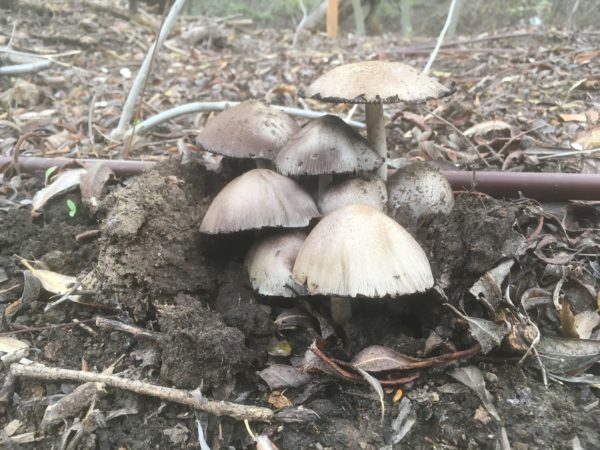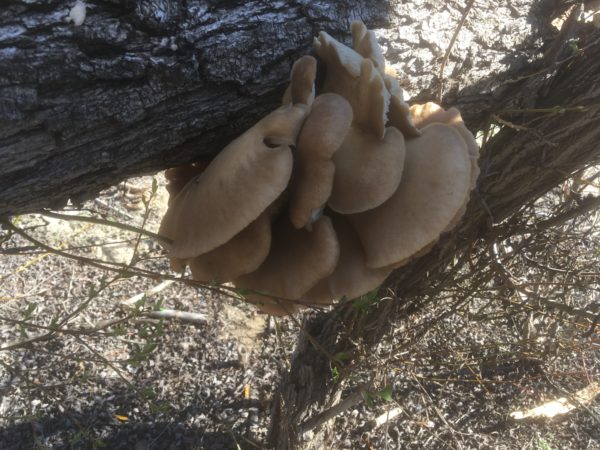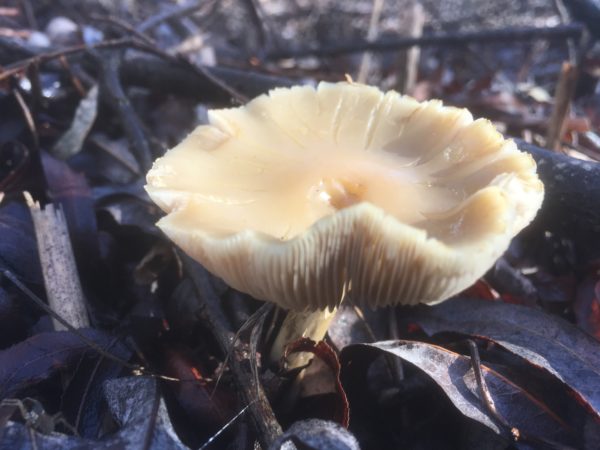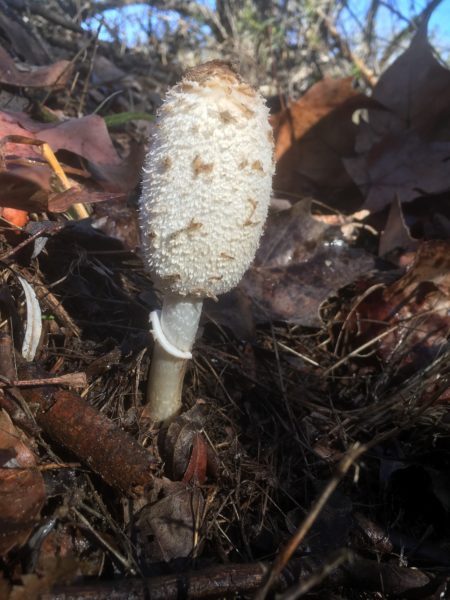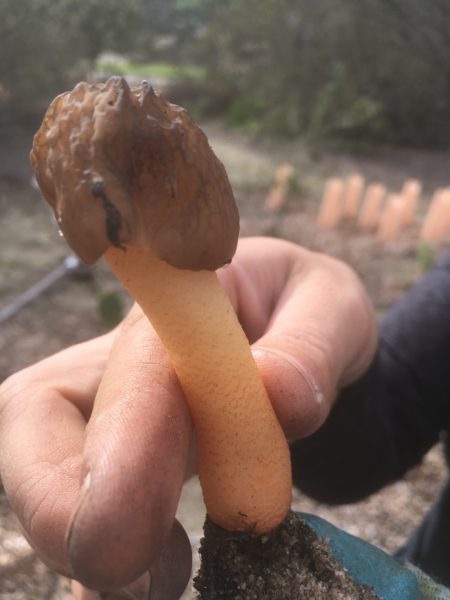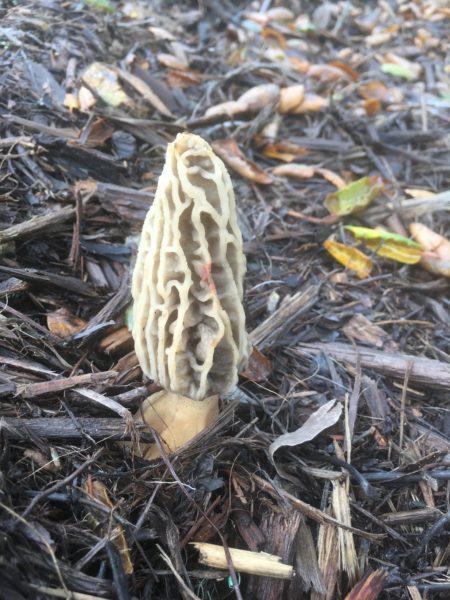The hills are green, and the rivers, streams, and creeks are flowing. The rain has come, and the plants and animals are thriving. But if you look closely, you may notice something else growing from beneath the soil or on a tree. Fast growing and shrouded in mystery, they are often-misunderstood organisms. Some are edible. Some are poisonous. And yes, some are even outlawed and can make you hallucinate. I’m talking about mushrooms!
Southern California’s hot and dry climate is normally not conducive to mushroom growth, but with the recent rains, we have been seeing countless mushrooms throughout our restoration sites – on mulch, under trees, and on dead and living trees alike. We’ve been finding mushrooms everywhere, and I must say we’re ecstatic.
Why are we so happy?
Fungi fall into the decomposer category, meaning they break down dead or decaying organisms to get their energy, carbon and nutrients for growth and development. Decomposers are extremely beneficial to their environment because they convert large, complex organic matter into simpler organic matter. Fungi have evolved to break down lignin, which is what the tough cell wall of trees are made of – this is why most of the mushrooms we find are on or near trees. This process is a part of the nutrient cycle and is essential for recycling organic matter back into the environment.
Mushrooms are the fleshy, spore-bearing, fruiting body of a fungus and are unique in that they do not require sunlight to grow. Fungi live underground, and when a food source and moisture make conditions right, a mushroom will form. Mushrooms release their spores into the environment where they will disperse, usually by wind or water, and if the right conditions are present they will form more mushrooms.
You may be familiar with shiitake, portobello, or truffles as they are edible and can be found in most grocery stores. These, and many other species, are grown commercially for human consumption and many (chaga, lion’s mane, reishi) are known to have medicinal properties. There are also very poisonous mushrooms that have lethal consequences, and California is home to two of the most toxic mushrooms known, the death cap and the destroying angel.
Mushroom identification can be quite difficult, and many mushrooms have lookalikes which can make the process even harder. When you mix in the fact that ingesting some mushrooms can have lethal consequences, it is never recommended to eat a wild mushroom without the aid of a professional mushroom expert (mycologist).
Note that none of our mushroom pictures are labeled – we’re not even going to try to identify these without training!
Mushrooms and fungi are a positive sign regarding environmental health, and southern California benefits greatly from their presence. So next time you’re out hiking and see a mushroom, you can take comfort in knowing that it’s working hard to make this place we call home more beautiful. Just please don’t eat it.

